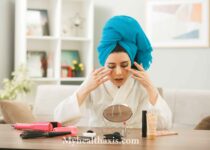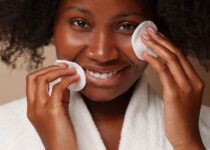9 Step by Step Guide To Cleansing and Exfoliation Techniques
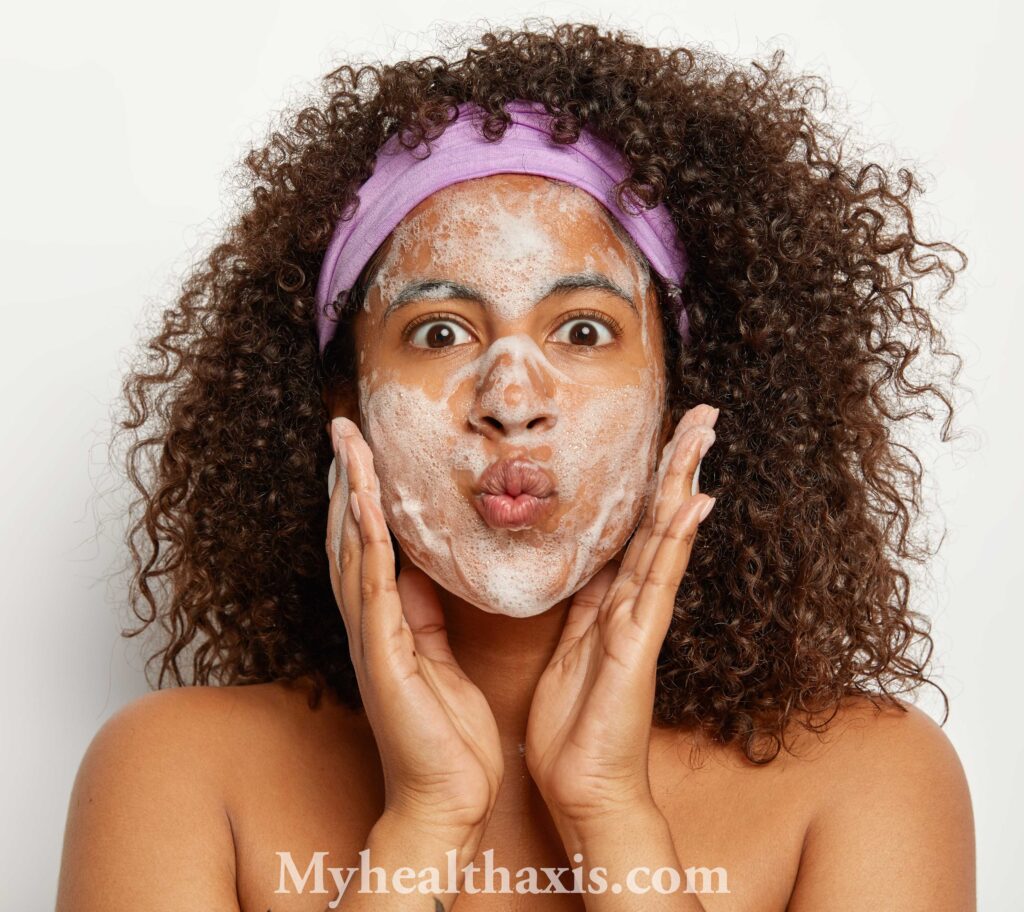
Introduction to Cleansing and Exfoliation Techniques
Embark on a transformative journey towards radiant and healthy skin through the artful practices of cleansing and exfoliation. In the pursuit of a luminous complexion, these fundamental skincare techniques stand as the cornerstone of a comprehensive beauty ritual.
Cleansing and Exfoliation, a ritual as ancient as beauty itself, serves as the gateway to a fresh canvas. It is the ritualistic act of purifying the skin from the day’s impurities, removing traces of makeup, pollutants, and excess oils. This initial step not only preps the skin but sets the stage for subsequent skincare products to penetrate effectively, nurturing the skin from within.
Cleansing and Exfoliation, a delicate dance of renewal, unveils a brighter and smoother skin texture. It involves the meticulous removal of dead skin cells that accumulate over time, allowing the skin to breathe and rejuvenate. This intricate process not only refines the skin’s surface but also stimulates cellular turnover, revealing the vibrant layers beneath.
Together, cleansing and exfoliation form a symbiotic relationship, creating the perfect canvas for skincare to flourish. As we delve into the nuances of these rituals, we unravel the secrets to unlocking the natural radiance that lies within, empowering each individual to embark on a personalized journey towards their most luminous and revitalized self.
See Also: How To Get Clear And Glowing Skin: 12 Nutritional Tips for Clear and Glowing Skin
How Do I Cleanse and Exfoliate?
Cleansing:
- Choose the Right Cleanser: Pick a gentle cleanser suitable for your skin type.
- Wet Your Face: Splash your face with lukewarm water to open pores.
- Apply Cleanser: Use a small amount and massage it onto your face in circular motions.
- Rinse Thoroughly: Wash off the cleanser with water, ensuring no residue remains.
Exfoliation:
- Select the Appropriate Exfoliant: Opt for a chemical or physical exfoliant based on your skin’s needs.
- Apply with Care: Follow product instructions, gently massaging the exfoliant onto damp skin.
- Avoid Over-Exfoliating: Limit exfoliation to 1-3 times per week to prevent irritation.
- Rinse and Moisturize: Wash off the exfoliant, and follow up with a moisturizer to replenish hydration.
What Comes First, Cleansing or Exfoliating?
Cleansing comes first in your skincare routine, followed by exfoliating. Start with a clean canvas by removing makeup, dirt, and oil through cleansing. Once your face is clean, you can then proceed with the exfoliation step to remove dead skin cells and promote a smoother complexion.
How Can I Exfoliate my Face?
To exfoliate your face:
- Choose Your Exfoliant: Select a chemical or physical exfoliant based on your skin type and needs.
- Cleanse First: Begin with a gentle cleanser to remove surface impurities.
- Apply Exfoliant: Follow product instructions and apply the exfoliant to your damp face. Be gentle, avoiding the eye area.
- Massage in Circular Motions: Use your fingertips to massage the exfoliant in circular motions, paying attention to areas with rough skin or congestion.
- Rinse Thoroughly: Wash off the exfoliant with lukewarm water, ensuring no residue remains.
- Moisturize: Finish with a hydrating moisturizer to replenish moisture.
Remember, it’s crucial not to over-exfoliate, so limit this step to 1-3 times per week, depending on your skin type and the product’s recommendations.
Do You Exfoliate Before or After Body Wash?
Exfoliate before using body wash. Start with exfoliation to remove dead skin cells and promote smoother skin. Follow up with your regular body wash to cleanse and nourish the newly revealed skin. This sequence allows for a more effective exfoliation and ensures that the cleansing agents in the body wash can work on fresh, exfoliated skin.
Cleansing and Exfoliation Techniques at Home
Cleansing Techniques at Home:
- Oil Cleansing: Massage a natural oil (like olive or coconut oil) onto your face to dissolve impurities, then rinse.
- Double Cleansing: Use an oil-based cleanser followed by a water-based one for a thorough cleanse.
- Micellar Water: Soak a cotton pad in micellar water to remove makeup and cleanse without rinsing.
- Honey Cleansing: Apply raw honey to your face, let it sit for a minute, and then rinse for a gentle cleanse.
Exfoliation Techniques at Home:
- DIY Sugar Scrub: Mix sugar with a bit of olive oil for a homemade scrub. Gently massage, then rinse.
- Yogurt and Oatmeal Mask: Combine plain yogurt and ground oats to create a natural exfoliating mask.
- Baking Soda Paste: Mix baking soda with water to create a paste. Gently scrub and rinse.
- Fruit Acid Mask: Apply mashed fruits like papaya or pineapple for natural enzymatic exfoliation.
Remember to patch-test your cleansing and Exfoliation DIY recipes and adjust frequency based on your skin’s response.
How to Exfoliate the Skin Naturally
Natural Exfoliation Techniques:
Sugar Scrub:
- Mix brown sugar with honey or olive oil.
- Gently scrub the mixture onto damp skin.
- Rinse thoroughly with water.
Oatmeal Mask:
- Blend oats with water or yogurt to form a paste.
- Apply the mixture to your face, avoiding the eyes.
- After a few minutes, gently scrub and rinse.
Coffee Grounds Scrub:
- Combine used coffee grounds with a bit of coconut oil.
- Massage the mixture onto your skin and rinse off.
Fruit Enzyme Exfoliation:
- Apply mashed papaya or pineapple to your face.
- Allow it to sit for a few minutes before rinsing.
Yogurt and Honey Mask:
- Mix plain yogurt with honey.
- Apply the mixture, leave it on for a while, and then rinse.
- Always be gentle when exfoliating, and consider your skin type and any sensitivities before trying new natural exfoliants.
Choosing the Right Cleanser for Your Skin Type
Choosing the Right Cleanser for Your Skin Type:
For Dry Skin:
- Look for a hydrating, creamy cleanser with ingredients like glycerin or hyaluronic acid.
- Avoid harsh foaming cleansers that can strip natural oils.
For Oily or Acne-Prone Skin:
- Opt for a foaming or gel-based cleanser with salicylic acid or benzoyl peroxide.
- Consider a cleanser containing niacinamide to regulate oil production.
For Sensitive Skin:
- Choose a fragrance-free, gentle cleanser with soothing ingredients like aloe vera.
- Avoid harsh chemicals and exfoliating beads that may irritate the skin.
For Combination Skin:
- Use a mild, balanced cleanser that neither overly hydrates nor strips oils.
- Gel-based cleansers can work well for combination skin.
For Normal Skin:
- You have more flexibility; a gentle, pH-balanced cleanser is suitable.
- Experiment to find what works best for your skin’s specific needs.
Always patch-test new products and consider seasonal changes or any skin concerns when selecting a cleansing and Exfoliation Techniques.
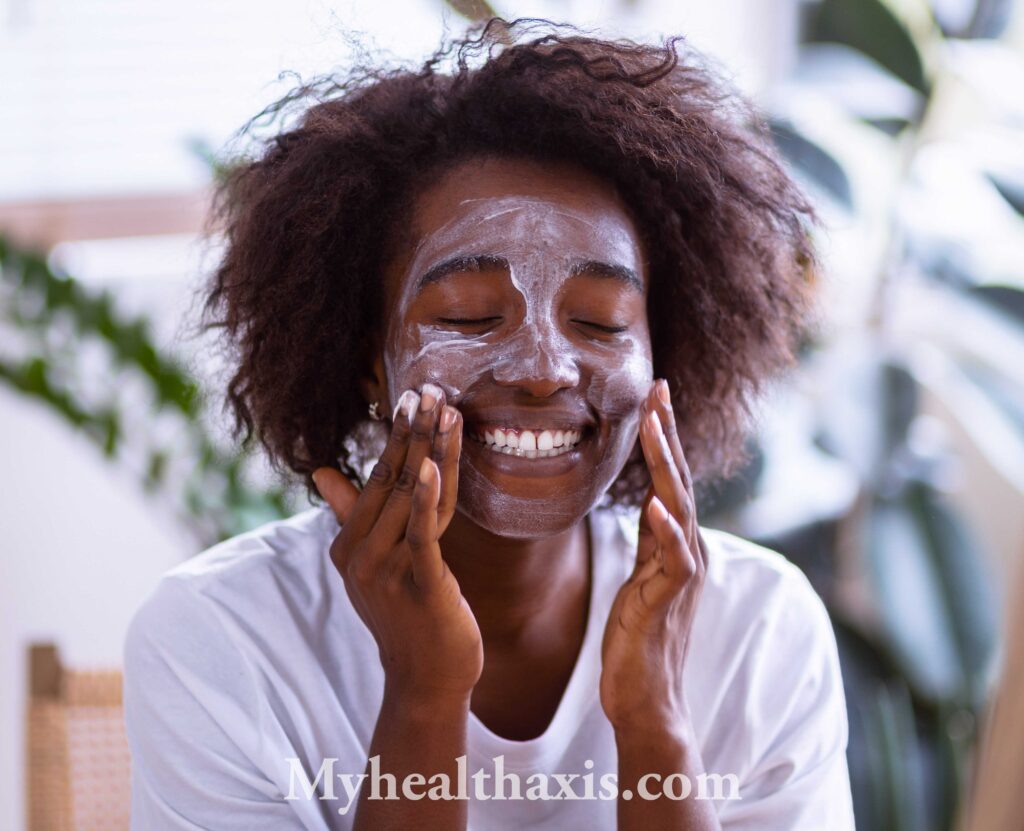
Step-by-Step Guide to Proper Cleansing
Step-by-Step Guide to Proper Cleansing:
- Start with Clean Hands: Wash your hands thoroughly before touching your face.
- Remove Makeup (if applicable): Use a makeup remover or cleansing wipe to eliminate makeup.
- Wet Your Face: Splash your face with lukewarm water to open pores.
- Apply Cleanser: Take a small amount of your chosen cleanser. Gently massage it onto your face using circular motions.
- Focus on Problem Areas: Pay extra attention to areas with makeup, dirt, or congestion.
- Rinse Thoroughly: Wash off the cleanser with lukewarm water. Ensure no residue remains on your skin.
- Pat Your Face Dry: Use a clean, soft towel to pat your face dry. Avoid rubbing, as it can irritate the skin.
- Follow with Toner (Optional): If you use a toner, apply it after cleansing to balance the skin’s pH.
- Moisturize: Finish by applying a suitable moisturizer to lock in hydration.
Adapt this routine to your skin type and specific needs, and be consistent for best results.
Benefits of Regular Cleaning and Exfoliation
Benefits of Regular Exfoliation:
- Removes Dead Skin Cells: Enhances cell turnover, revealing fresher, younger-looking skin.
- Unclogs Pores: Prevents the buildup of debris and reduces the risk of acne and blackheads.
- Improves Skin Texture: Smoothes rough patches and promotes a more even skin tone.
- Boosts Circulation: Stimulates blood flow, contributing to a healthy complexion.
- Enhances Product Absorption: Allows skincare products to penetrate better for increased effectiveness.
- Reduces Fine Lines and Wrinkles: Regular exfoliation may diminish the appearance of fine lines and wrinkles.
- Brightens Dull Skin: Evens out skin tone and restores a radiant, youthful glow.
- Prevents Ingrown Hairs: Helps to prevent ingrown hairs by clearing away dead skin.
Remember to exfoliate in moderation and choose products suitable for your skin type to avoid irritation.
Finding the Right Exfoliator for Your Skin
Finding the Right Exfoliator for Your Skin:
- Know Your Skin Type: Consider whether your skin is dry, oily, sensitive, or a combination.
- Choose the Right Type of Exfoliant: Chemical Exfoliants: Suitable for most skin types, especially sensitive skin.
- Physical Exfoliants: Can be effective, but avoid if you have sensitive or irritated skin.
Look for Key Ingredients:
- Glycolic Acid: Effective for brightening and addressing signs of aging.
- Salicylic Acid: Ideal for oily and acne-prone skin, penetrates pores.
Lactic Acid: Gentle and suitable for sensitive skin, helps with hydration.
Consider Texture and Formulation: - Fine Particles: For physical exfoliants, opt for fine particles to minimize irritation.
- Gel, Cream, or Serum: Choose a formulation that suits your preference and skin type.
- Check for Additional Benefits: Some exfoliators contain added ingredients like antioxidants or hydrating elements for extra benefits.
- Perform a Patch Test: Test a small amount on a small area to ensure your skin reacts positively.
- Frequency Matters: Adjust the frequency of exfoliation based on your skin’s response and the product recommendations.
- Consult with a Dermatologist: If in doubt, seek professional advice, especially if you have specific skin concerns or conditions.
Finding the right exfoliator involves considering your unique skin needs and preferences for optimal results.
Frequency and Timing of Cleaning and Exfoliation
Frequency and Timing of Exfoliation:
- Normal/Combination Skin: 2-3 times per week is generally suitable.
- Oily/Acne-Prone Skin: 3 times per week, or as recommended by a dermatologist.
- Dry/Sensitive Skin: 1-2 times per week, using a gentle exfoliant.
- Morning or Night: Exfoliating at night allows skin to recover while you sleep. If using in the morning, follow with sunscreen for protection.
- Avoid Over-Exfoliating: Pay attention to your skin’s response and reduce frequency if irritation occurs.
- Consistency is Key: Regular but not excessive exfoliation yields the best results.
- Consider Seasonal Changes: Adjust frequency based on how your skin reacts to changing weather conditions.
- Follow Product Instructions: Adhere to the recommended usage guidelines provided by the exfoliant’s manufacturer.
Customize your cleansing and exfoliation routine based on your skin type, the specific product you’re using, and any seasonal variations in your skin’s needs.
Conclusion
In conclusion, establishing a proper skincare routine that includes cleansing and exfoliation is essential for maintaining healthy and radiant skin. Choosing the right products tailored to your skin type, and adhering to a consistent routine, can yield significant benefits.
Cleansing and Exfoliation serves as the foundation, removing impurities and preparing the skin for subsequent steps. Cleansing and Exfoliation, when done in moderation and with the appropriate products, enhances this process by promoting cell turnover, unclogging pores, and revealing a smoother complexion.
Remember to be mindful of your skin’s unique needs, perform patch tests when trying new products, and consult with a dermatologist if you have specific concerns. With a thoughtful approach to cleansing and Exfoliation in skincare, you can achieve a glowing, vibrant complexion that reflects your overall well-being.
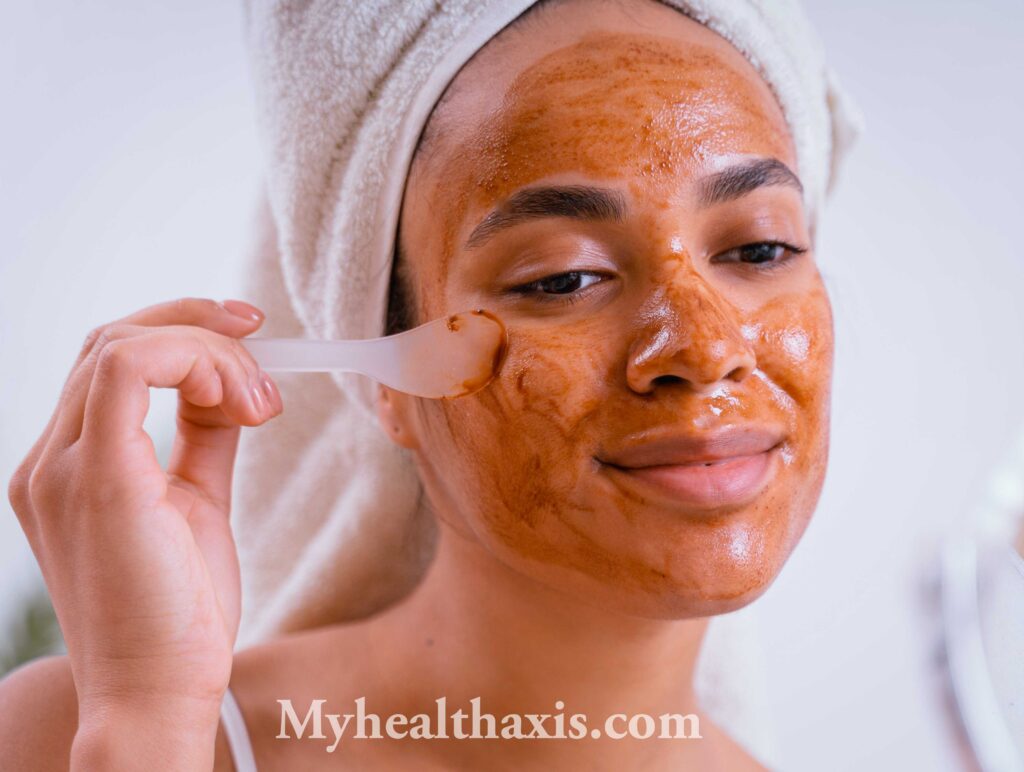
Frequently Asked Questions ( FAQs)
What is the recommended frequency for cleaning and Exfoliation?
The frequency of Cleaning and exfoliation depends on your skin type. Generally, 2-3 times per week is suitable for normal/combination skin, while sensitive skin may benefit from 1-2 times per week.
Can I use physical and chemical exfoliants together?
It’s best to avoid using physical and chemical exfoliants in the same routine to prevent potential irritation. Choose one type based on your skin’s needs.
When should I exfoliate, morning or night?
Exfoliating at night allows your skin to recover during sleep. If you prefer mornings, ensure to follow up with sunscreen for daytime protection.
How do I choose the right cleanser for my skin type?
Consider your skin type (dry, oily, sensitive) and choose a cleanser with appropriate ingredients. For dry skin, opt for hydrating cleansers; for oily skin, choose oil-free or gel-based cleansers.
Can I exfoliate if I have sensitive skin?
Yes, but choose gentle exfoliants, possibly chemical ones with mild acids like lactic acid. Start with a patch test to ensure compatibility.
Is it necessary to moisturize after exfoliating?
Yes, moisturizing is crucial after exfoliating to replenish hydration and maintain skin balance.
How do I prevent over-exfoliation?
Monitor your skin’s response and adjust frequency accordingly. Follow product instructions and avoid combining multiple exfoliating products.
Should I consult a dermatologist before starting a new skincare routine?
If you have specific skin concerns or conditions, consulting a dermatologist is advisable for personalized recommendations.
Remember, individual skincare needs can vary, and these FAQs provide general guidance. Always consider your unique skin type and conditions when establishing a skincare routine. For more information, visit: https://www.skintypesolutions.com
